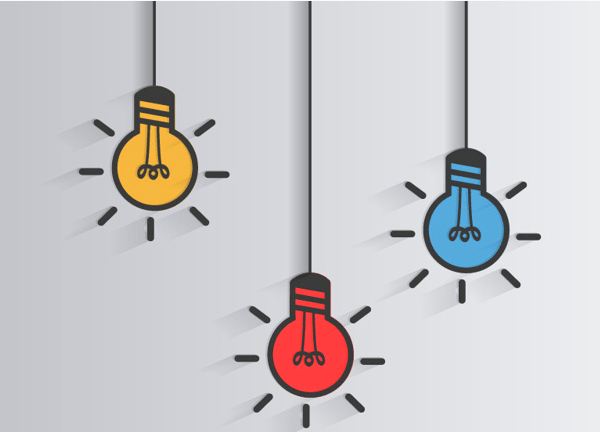Creative Thinking
Table of Contents
Creative thinking, Creative thinking skills
Creative thinking is the ability to connect various inputs in an unique and functional way in response to a complex challenge.
What is the creative thinking importance?
Creative Thinking is a process of thinking outside the box by design. It is not about waiting for inspiration or a set of wishing techniques but, a time-bound step by step process of identifying problems and opportunities, defining goals, exploring possible strategies, anticipating outcomes and acting on them and finally looking back to learn.
Request For a Call Back
Why are Creative Thinking Techniques important in today’s business environment?
Creative thinking is a muscle that needs to be exercised across each waking minute. You might be an entry level coding professional, or a middle manager in a B2B sales or an executive that mentor CEO’s of high profile companies; you could be a trainer or consultant or even self-employed, but the importance of mastering creative thinking skills is non-negotiable. Our business places today move at a breakneck speed to convert customer’s wants-interests-needs into tangible product and service offerings. This activity needs creative thinking. We are part of an ever-expanding complex value chain with hundreds of suppliers with their unique vision and missions. To adapt and carve out your company’s unique space means employees need to be creative.
It is in this context that Creative Thinking skills are mandatory to adopt and master.

What are the creative thinking methods?
Creative Thinking is a widely researched topic with academic frameworks that guide real world application. One contemporary cited model as used in the Bodhih workshop on Creative Thinking best practices is the Bransford and Stein model: I-D-E-A-L which can be expanded as “Identify a problem – define a goal – explore strategies – anticipate outcomes and learn”.
What are the traps if Creative Thinking training is absent?
When Creative Thinking skills are absent in a company, it is easy for employees to lose track of the overarching purpose that binds them together; there are chances that team members get stuck in routine ways of thinking; lack of fresh ideas starts to erode market edge and there is an overall drop in business results including bottom lines and profits.
What does Bodhih’s Creative Thinking strategies training cover?
At Bodhih, creative thinking skills is a flagship offering. At its core, this workshop focusses on various tools to achieve creative thinking, the problem solving foundational skills, Barriers to creative thinking and finally, offers a powerful case study for participants to practice the creative thinking tool kit.
Kicking off with class exercises and presentations, Bodhih’s Creative Thinking training program
educates participants on how to mind-map the variables the basics. Through ice-breaker activities, learners get a sense of their individual problem solving mindset and creative thinking orientation.
What are the various creative thinking tools and techniques?
Through deep serving and candid discussions, the session thereafter works on a self-assessment instrument that explores various problem solving styles. This facilitator led audit also enables a fresh comprehension of individual OC (orientation to change) and MP (manners of processing).
The next session opens up the class to the world of creative problem solving frameworks and techniques. Beginning with psychological strategies that governs conventional brainstorming methods, and moving on to tools called Nominal group thinking (NGT), Affinity diagram, parallel thinking (six hats method), the learners work their ways through techniques of lateral thinking, concept extraction, random word, pro-con tool, and voting methods.
What is contained in creative thinking development?
Through group discussions, video presentation, the spotlight is then brought on problem solving mindset that is critical to be understood. Learners are instructed on the various approaches to take ownership of a problem, looking beyond the obvious, and break their limit of belief systems.
Explained in detail through powerful industry studies, the tenured facilitator underlines the need to be able identify the barriers that prevent creative thinking to happen within organizations.
What are the core drivers of creative thinking and innovation skills?
Creative Thinking processes needs strong leadership will and tangible support from key influencers in organizations. The class exercises explore various touch points that leadership brings to answer the questions – “what can you see that causes you to think that there is a problem?”, “Where, why, when and how is the problem happening?” and the powerful visualisation exercise “What if I could do (Insert) that would remediate the situation?”
Bodhih’s facilitators are seasoned professionals who create linkages between skills picked up in the workshops and then to apply them in participant’s current roles. This is done through specific illustrations and analogies and is true for the next session at the Creative Thinking training program – Looking at potential causes of the problem.
How is creative thinking used for problem solving?
This session uses facilitator led discussion, group activity, and exploration techniques to equip participants with a clear vision to articulate a precise “who-what-why-where-when-how” summary for the problem defined. In the industry, this exercise is often referred to as “dimension-analysis”. Thereafter creative problem solving techniques are employed to surface the critical turning points which if impacted, can produce quantum results.
At Bodhih, Creative Thinking workshop is a popular session that is part of a larger Leadership skills training suite.
The session draws richly from research done around organizational Creative Thinking best practices and published literature on individual’s tool box for creativity.
The heart of the Creative Thinking & Problem solving program lies in the powerful session that highlights strategies to evaluate alternatives and selecting the one that offers the highest probability for success.
The insightful session delivered through case study and scenario explorations educates learners to both concept and practices of – goal orientation, boundary examination, progressive abstractions, and cause-effect diagrams.
How would you gain from India’s best creative thinking strategies training workshop workshops at Bodhih?
Bodhih customizes its creative thinking tools and training programs along the ADDIE model. Workshop experiences are analysed, designed, developed and delivered that are solution focused and include a range of blended training pedagogy such as role plays, group exercises, self-assessment tools, management games, individual activities, videos, case studies, facilitation, discussions and more.
In addition to the ADDIE model, the creative thinking and critical thinking sessions takes advantage of the experiential adult-learning process of concrete experience – reflective observation – abstract conceptualization – active experimentation.
The edge in Bodhih’s Creative Thinking classes comes from researched industry learnings, current best practices and academic insights. The work shop takeaways ensure that learnings are grasped and applied at all levels within a company and its individuals. The long term benefits are to institutionalise Creative Thinking skills by embedding effective creative thinking techniques, developing projects that offer safe prototyping environments sponsored by executives and leaders, and also promoting creative thinking culture across the entire company.
What is Bodhih’s promise on creative thinking in problem solving workshops?
Managers across industries and functions and executive level participants who have attended Bodhih’s sessions on Creative Thinking strategies talk of the changed individual and team behaviours, namely, how employees are quicker in employing brainstorming best practices, demonstrate lateral thinking, goal analysis and constantly seek fresh ideas to counter and master problem solving in complex situations.
Quick Links
Newsletter
Copyright © 2018 All rights reserved
Privacy Policy
Terms
